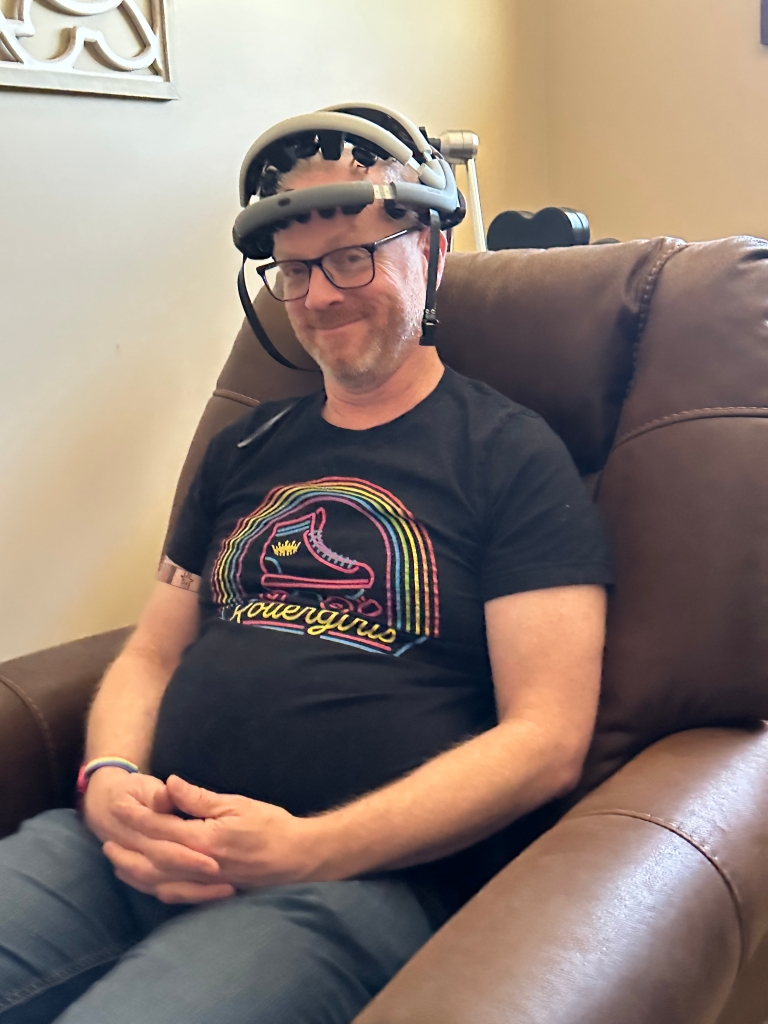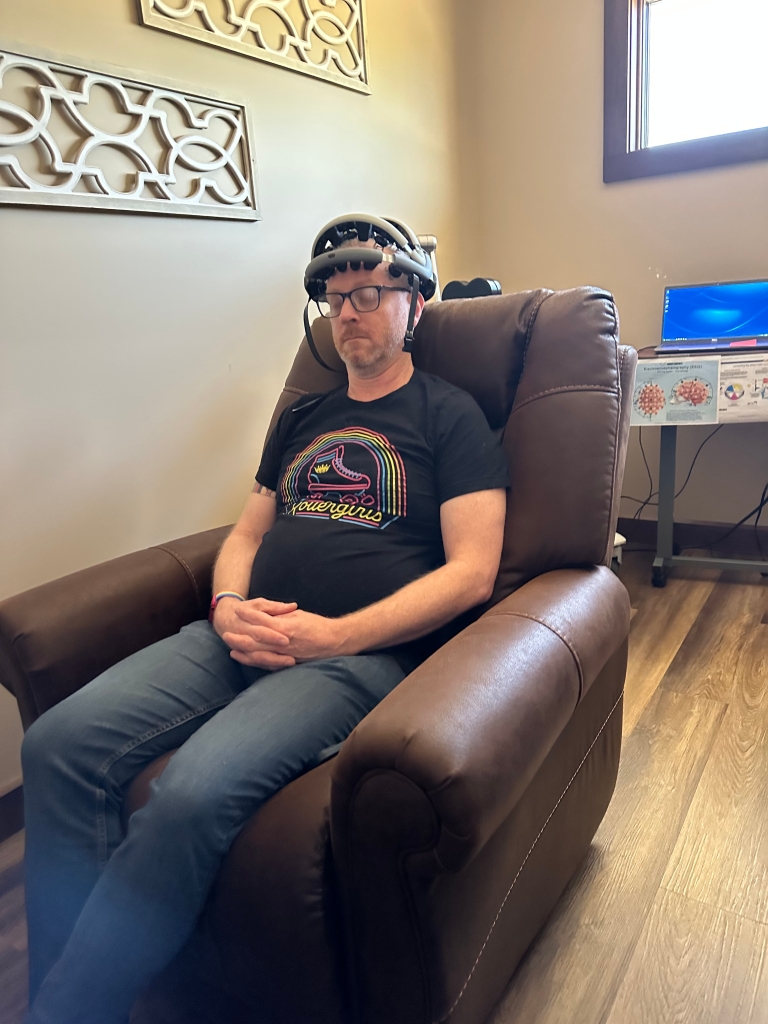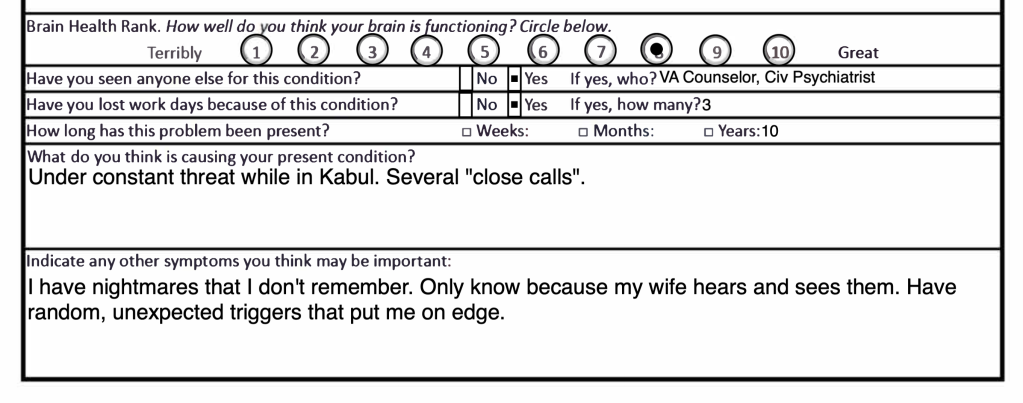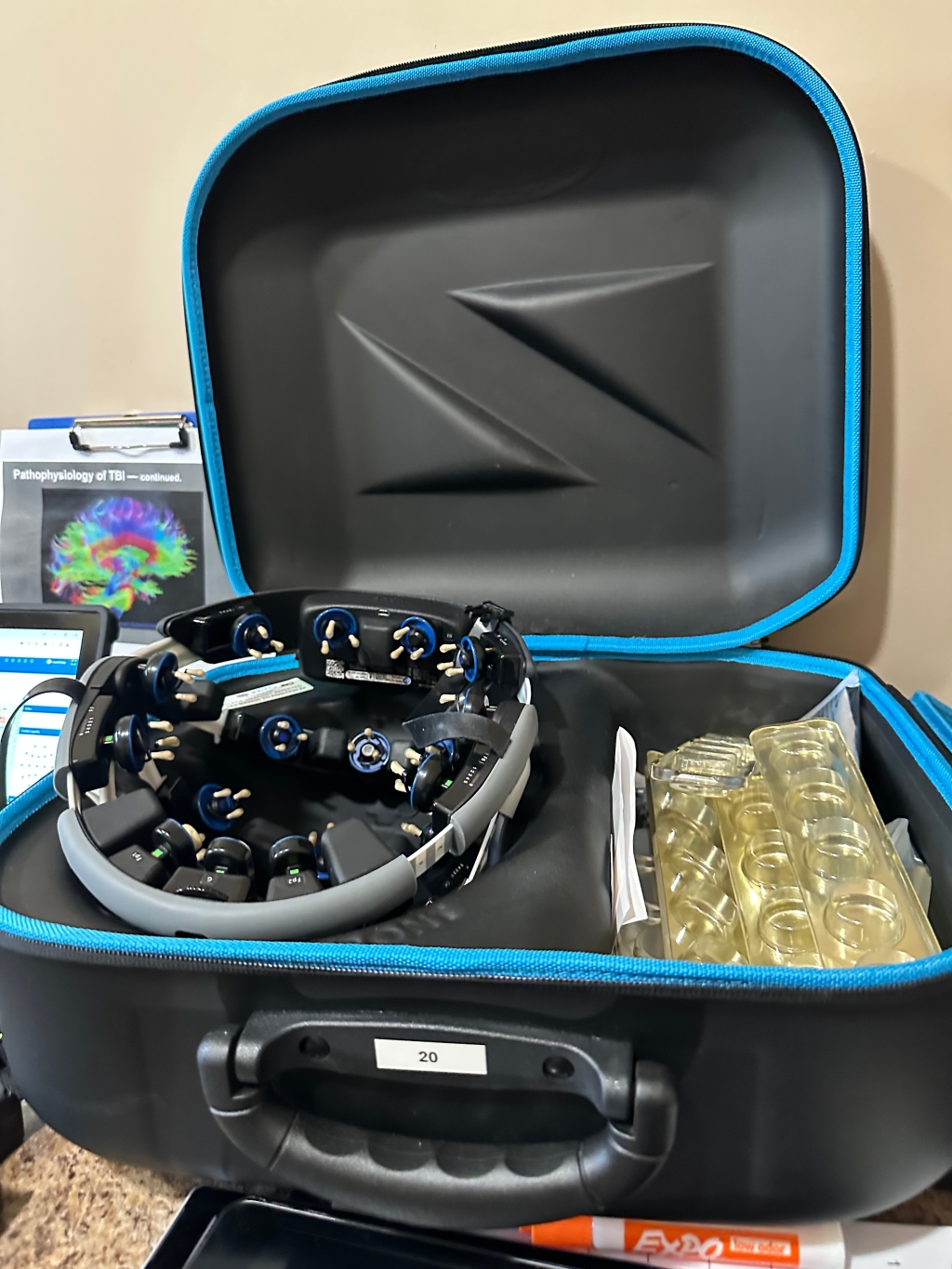CW: PTSD, Combat, PTSD triggers
Today I had my initial appointment and orientation to start eTMS treatment for PTSD. According to the folks I’ve talked to there, they see some pretty amazing, transformative outcomes, so I thought I’d journal about the experience. Hopefully, I’ll be able to look back on this as a key moment of self-improvement and if others are thinking about it, or just want to know more, they’ll be able to read and see what it’s like — at least for one person.
What’s eTMS?
According to the eTMS Ohio website:
eTMS is a highly customized use of Transcranial Magnetic Stimulation or TMS, based on sophisticated diagnostics. It is a non-invasive, painless, and drug-free option for the treatment of a wide range of neurological conditions.
The process uses magnets to target and align regions of your brain. My understanding is that TMS does a more generalized “magnetize your brain” kind of approach, while eTMS is tailored to your particular brain.
Thankfully, Ohio State Senator Frank Hoagland helped to get an eTMS treatment center for veterans and first responders. With funding from the Ohio Department of Mental Health & Addiction Services, the Muskingum Area Mental Health & Recovery Services Board, and a special legislative allocation from State Senators Jay Hottinger and Frank Hoagland, and thanks to an amazing friend who had told me about their own experience with TMS treatment for ADHD, I decided to give it a shot. The program is free for veterans and first responders with PTSD, and I’m excited to see what comes out of it!
Getting Started
The start of the process involved filling out a form on the eTMS Ohio website. It was just basic questions about who I am and why I wanted to do this. Within a few hours of submitting the form, I got a phone call. He confirmed a couple of things and then let me know I’d get a call from the New Lexington center closest to my house.
Another phone call, some texts, and some paperwork and I was all set to show up, on Memorial Day, to get started.
Ironically, the hardest part so far was filling out the forms. Any time I have to talk about my PTSD, what triggers it, and what my triggers are like, I get … triggered. So even though it was only a minor bother, I still didn’t get a lot of productive sleep last night.
First Visit
Today, my lovely spouse and I made the 50-minute drive through the Hocking Hills to get to New Lexington, Ohio, and the Perry Behavioral Health Choices Clinic, where the treatment is given. They confirmed who I was, and then we went into a small office, where they administered a short hearing test.
Next, they hooked me up to an EEG.

This was much cooler than the last time I had an EEG (during a sleep study). Previously, you had to stick 30+ little stickers on your head, then put on basically a shower cap and deal with a bunch of wires. This was just a helmet-type thing, with all the probes that could just be mushed into place.
Next, I had to sit still with my eyes closed for 10 minutes while the tech got readings of my brain’s activity.

I didn’t get a good look at the scans themselves, but my understanding is that they’re measuring the timing of the alpha waves. They should be in sync between the different channels of the brain, and the magnets will be used to help coax them into the right timing. The docs will look at it and set up a protocol based on what they see. The brief look I got seemed to be pretty out of sync on a couple areas, but I’m no doctor.
It took less time to go through the process than it did to drive there! Once I was done, we came home and now I’m blogging about it.
What’s Next
In the next couple days, a doctor will review the report and we’ll have a telehealth appointment to discuss the protocols. Then we’ll schedule the treatment. It will involve sitting for 20-30 minutes with the magnets working, five days a week, for 20-30 days. According to the folks who have been through it and are doing the work now, results start being seen within a couple weeks. I could potentially start as early as next Monday, although we may wait a week because of family events scheduled around that time.
Why?
I have PTSD stemming from my deployment to Kabul, Afghanistan, from December 2011 – September 2012. During that time, while I never had direct “kinetic” contact with the enemy, I had a number of close calls and — as my counselor explained to me a few years later — lived in a “heightened state of readiness” for nine months that can be just as traumatic as a single traumatic incident.
I’m fortunate enough to have my symptoms well managed. My VA counselor released me to be on an as-needed basis last year, and most days I’m able to function and live life with no major blockers. There are still a few residual things I deal with, though:
- Watching any movie or TV show with some sort of combat puts me on edge. If I know things are coming, I can handle it fine. In fact, you’ll often hear “OK, there’s a gunfight coming” when we’re watching something. More intense action can get me to a point where I just have to walk away, though.
- If unexpected triggers happen, they are much more difficult to deal with. These are places where you wouldn’t necessarily expect something to trigger the PTSD, but it does. Some examples are:
- A suspected active shooter situation that occurred at work. My response to that is what brought me to asking my ADHD psychiatrist about PTSD.
- Watching a comedy where someone ran over someone else’s foot with an SUV. Relatively harmless on the surface, but something like that happened to me during my deployment (my foot was fine, but for a moment I thought it was going to snap under the tire of our up-armored SUV). That was the most major, unexpected trigger I experienced: I ended up curled up on the floor in our basement for the night.
- Unexpected gunfire or loud booms. Hunting season is always fun!
- Talking about my PTSD. I’ve improved a lot about being able to talk about it. I mean, look at this post! But going into detail gets me pretty wound up. Last night, after answering the screening questions, I needed Ativan and medical marijuana to slow me down and it still took me a couple extra hours to get to sleep.
- I’ve also had chronic nightmares, although I don’t recollect any of them. The evidence is my restlessness and sometimes talk in my sleep that helps keep my partner up some nights.
Really, I could be fine where I am (the VA won’t even count the PTSD as “service connected” because I can live my life and didn’t start exhibiting symptoms until after I’d retired. Granted, I’m not really sure how late-manifesting PTSD isn’t service connected when everything centers around a combat deployment, but that’s government for ya. 🤷

Keeping up
I intend to blog about this throughout the experience. I’m not sure how often (hopefully daily, but….) I’ll get writing on the blog. You’re also welcome to keep an eye on my new digital garden where there will be more raw notes about the stuff.
Onward to better mental health!

Leave a comment